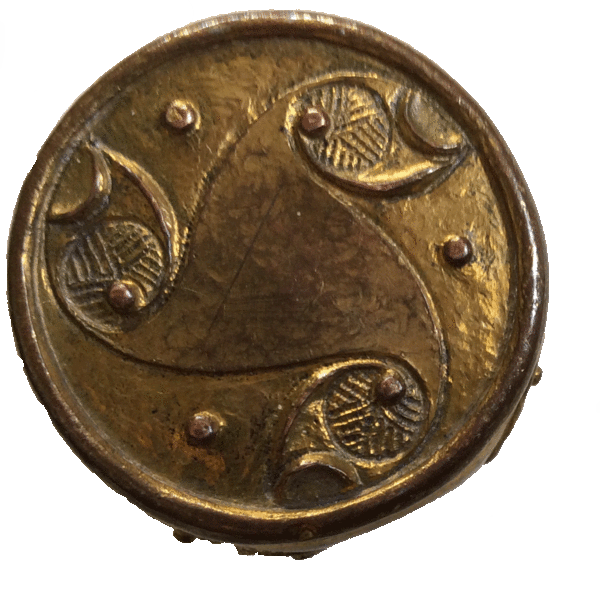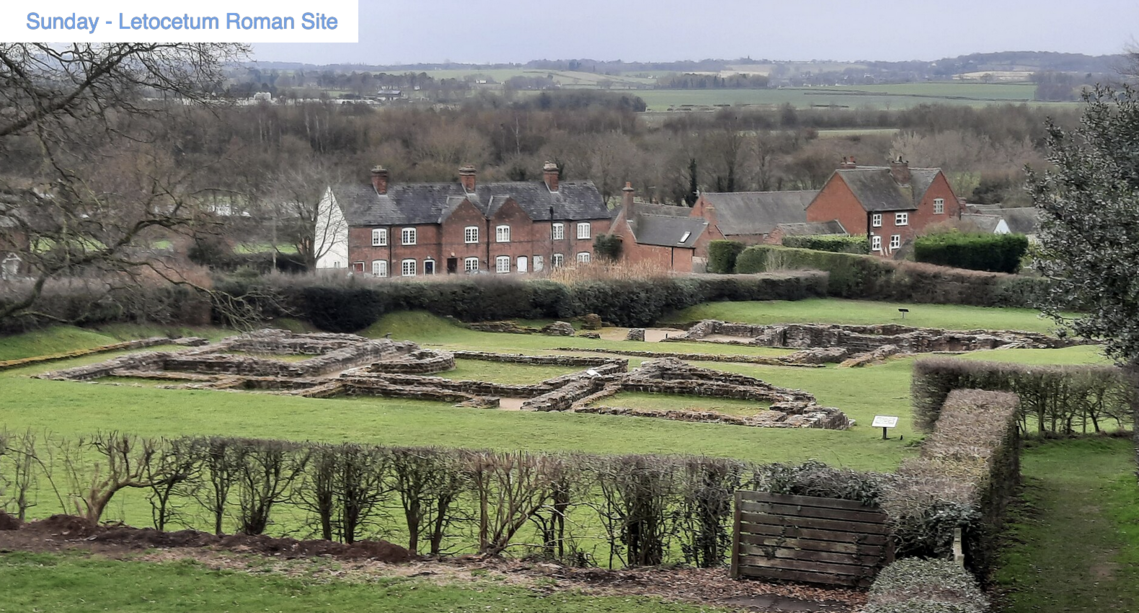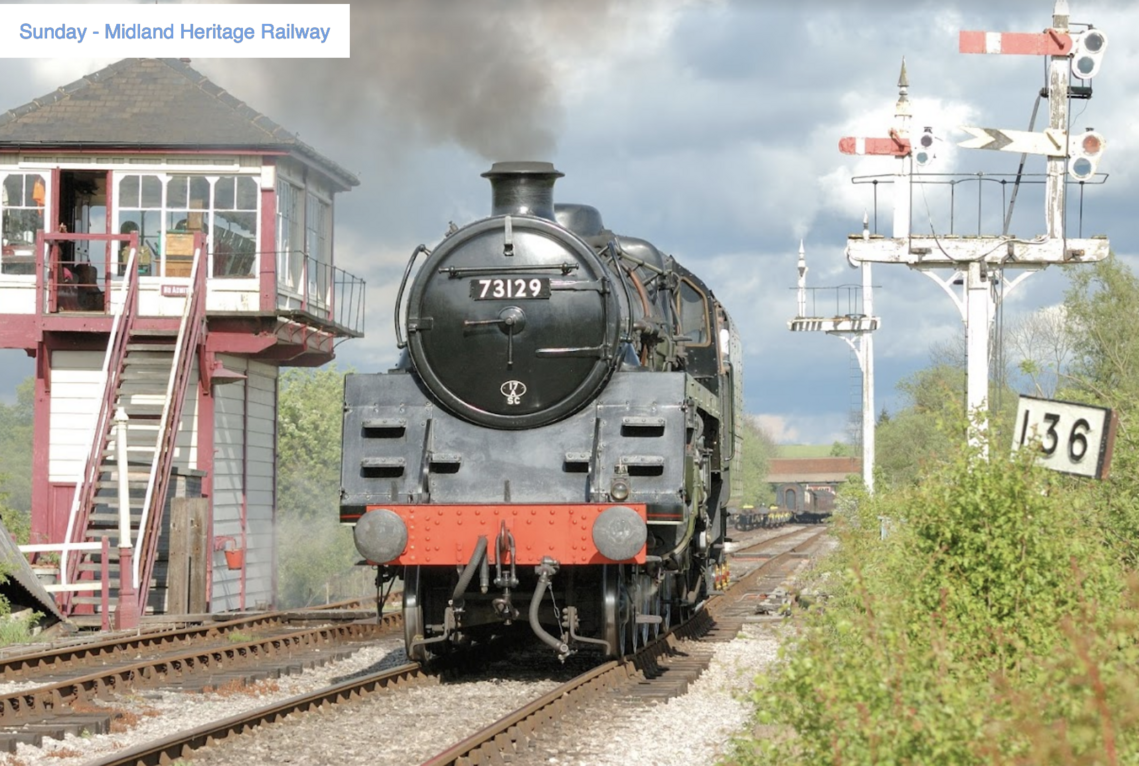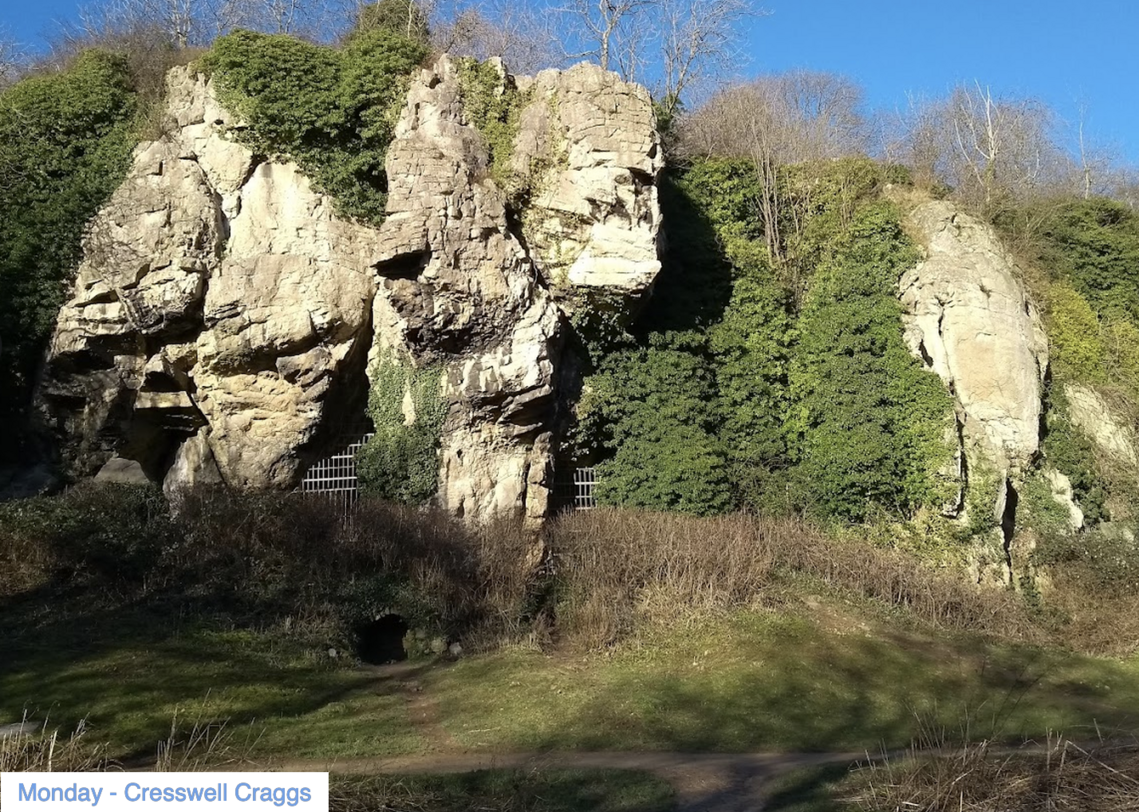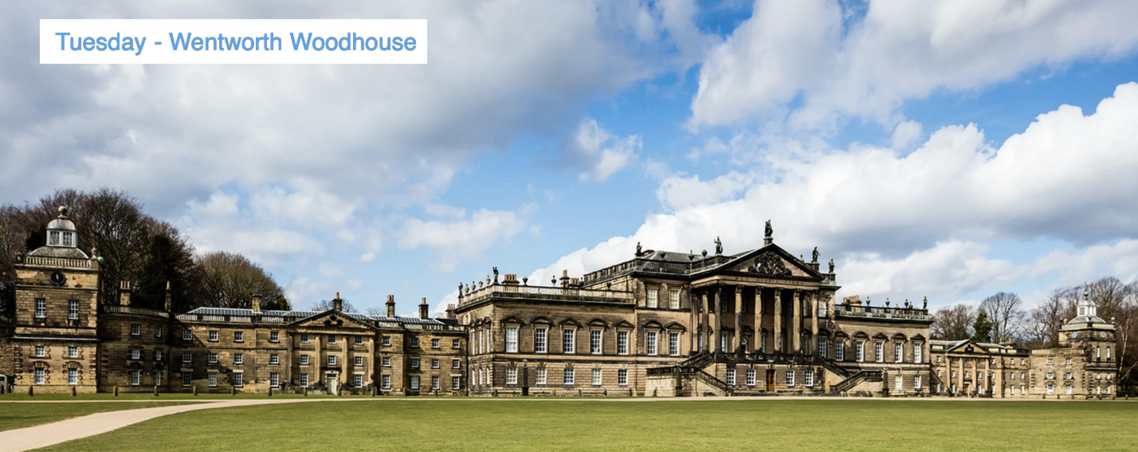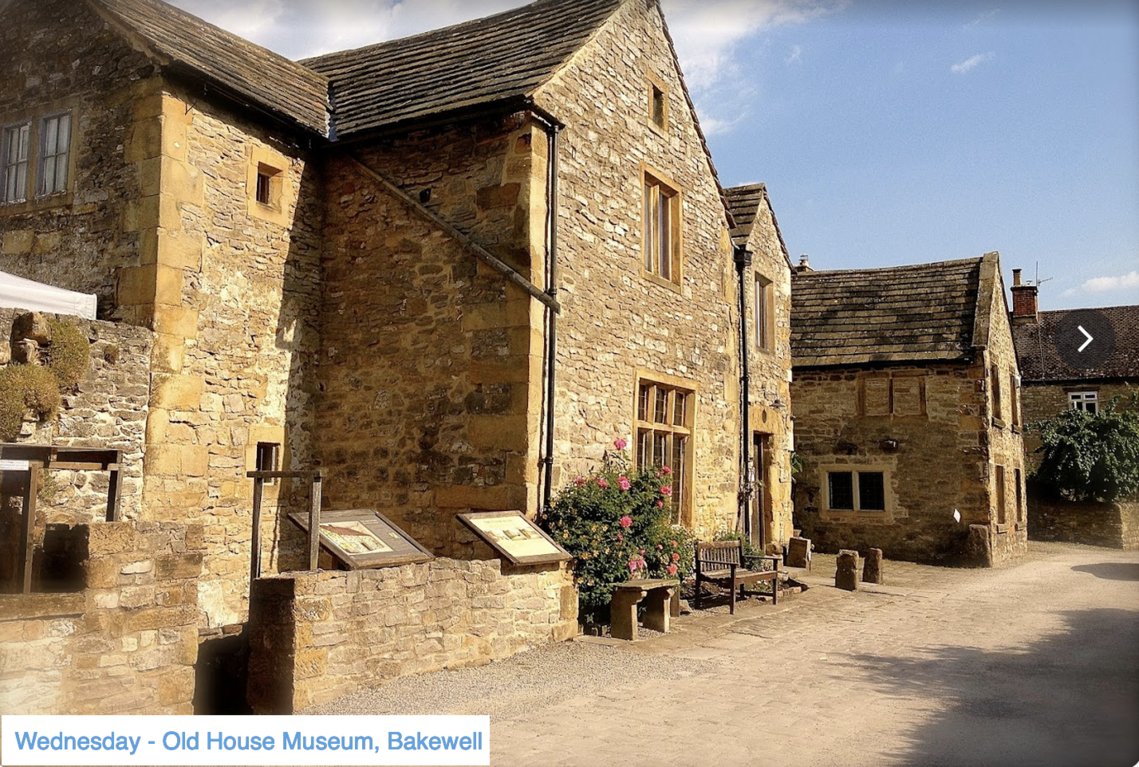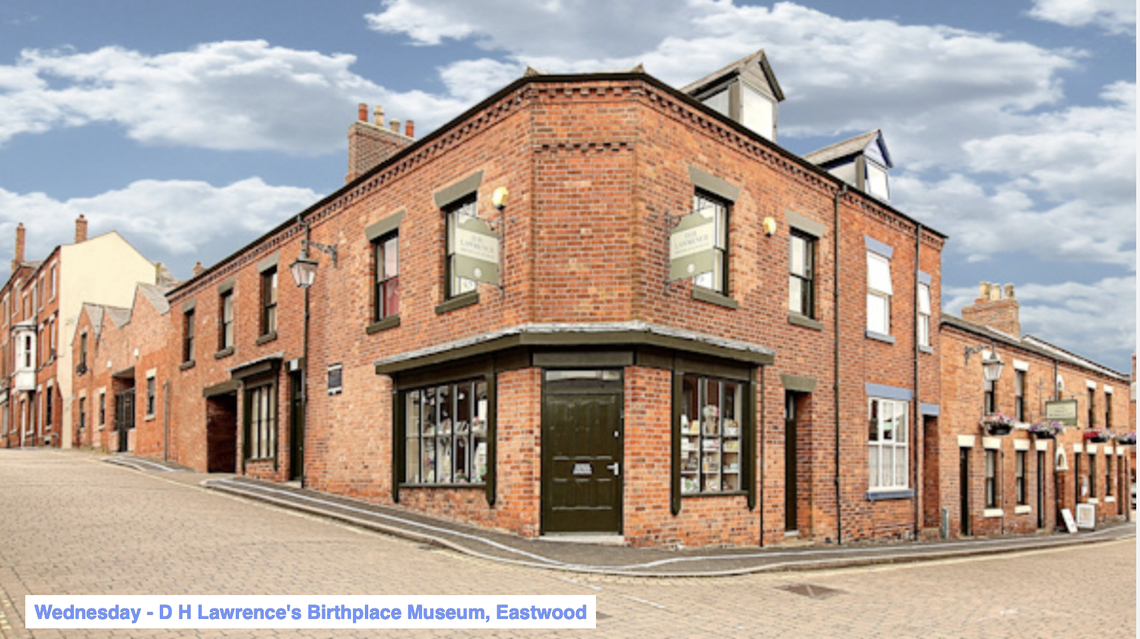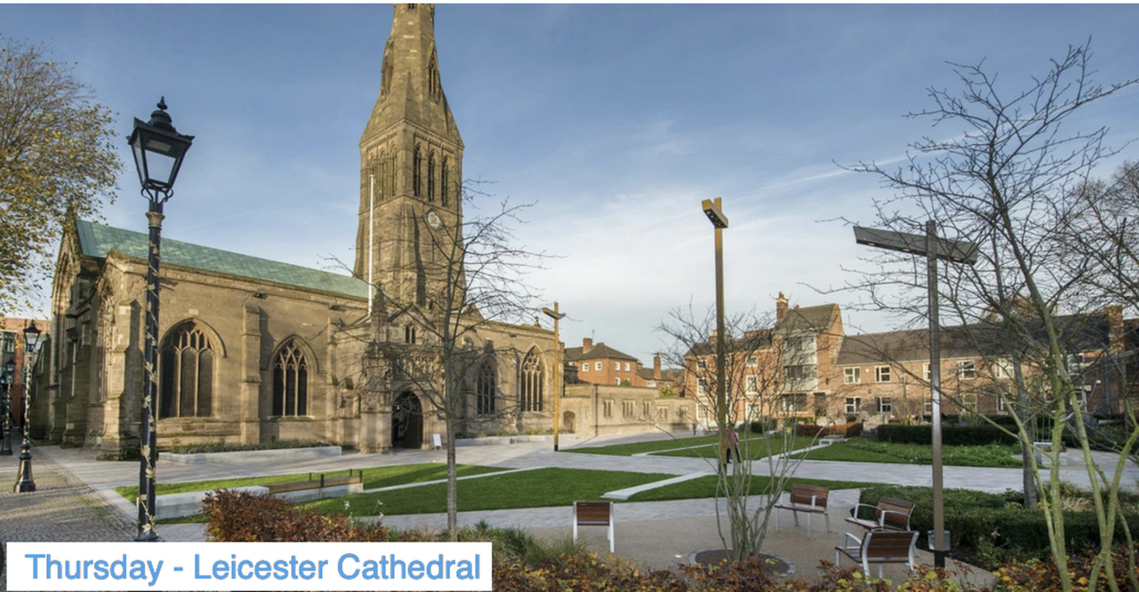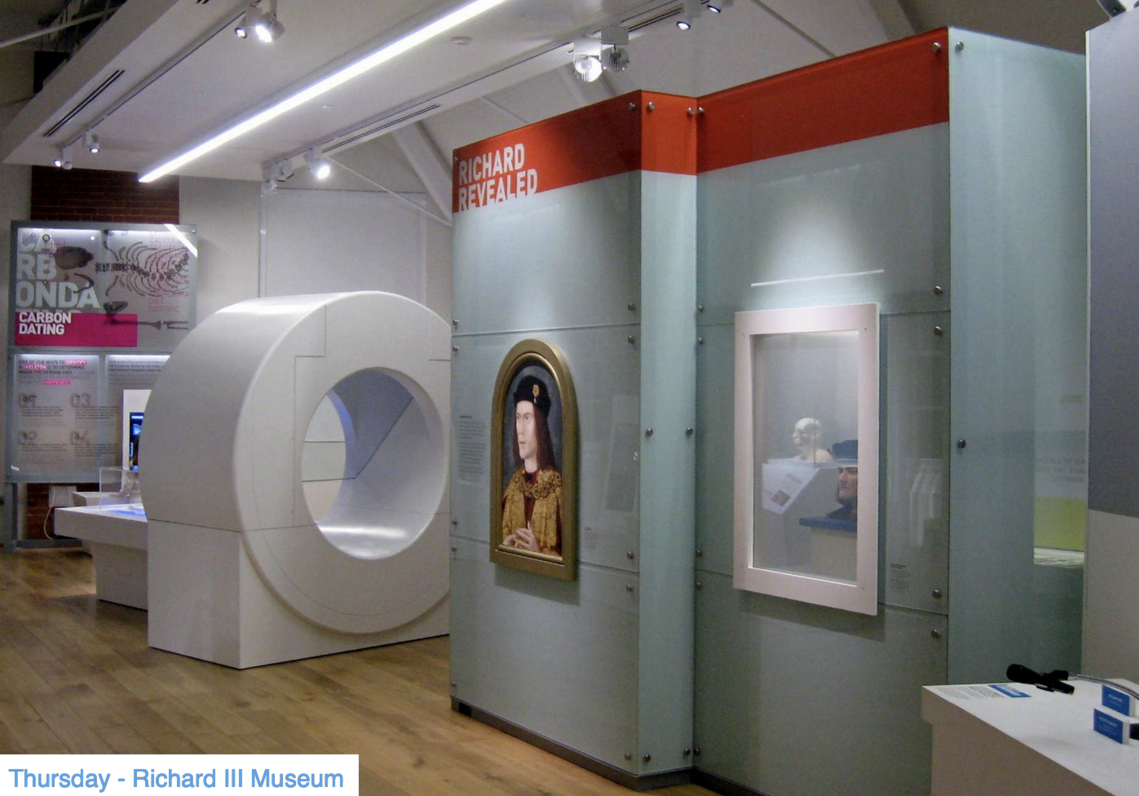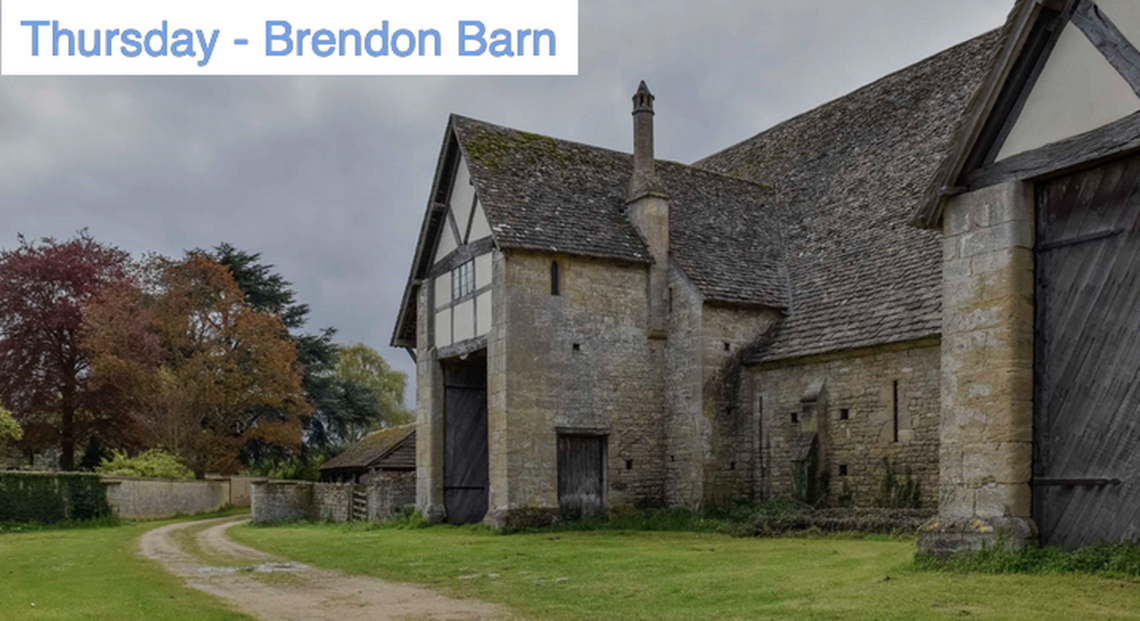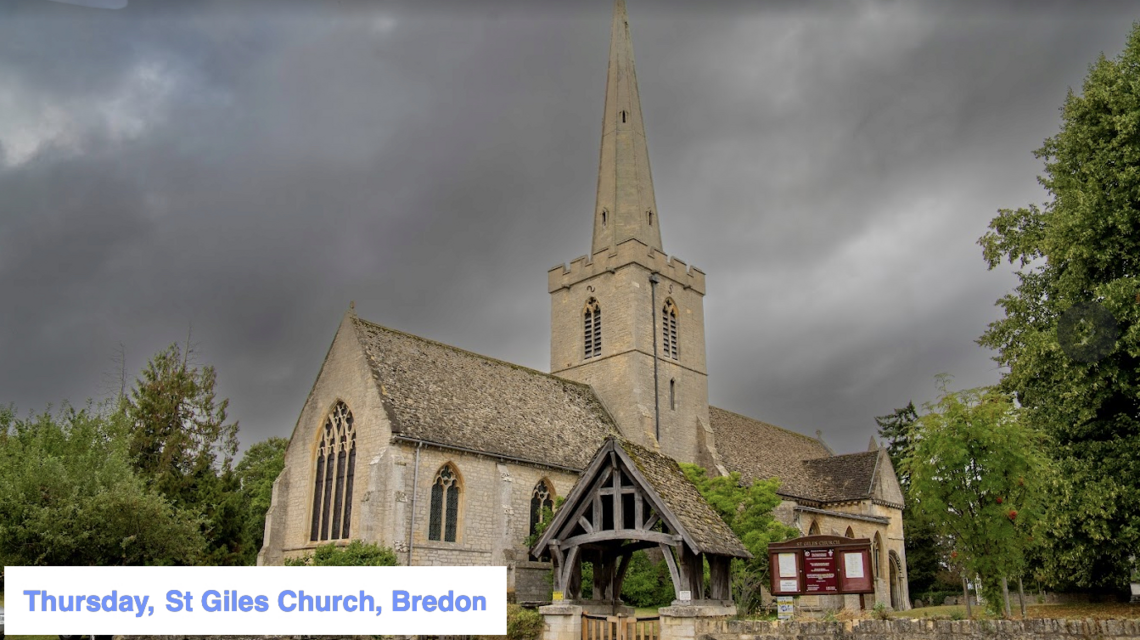Sunday 4th to Thursday 8th August 2024
Sunday: The first pick up by our Eagle driver, Dave was in Cleeve at 7.55am followed by stops in Yatton, Clevedon, Walton in Gordano and Blackrock Villas. We were on the M5 by 9am. Well done all 28 passengers!
We had a break at Frankley Services near Birmingham and arrived at Letocetum Roman site at Wall on the A6 at 11.30am as planned. There we had an excellent tour of the site given by Dr Mike Hodder of the University of Birmingham and English Heritage. He did have to battle against the noise from the A5! The Roman army came to the site soon after their invasion of Britain in 43AD. Several marching camps were on or near the site. It was on the crossroads of Watling Street (roughly the A6) and the Icknield Way (roughly the A38. These names were given later. We don't know what the Romans called their roads). A mansio (guest house for Imperial officials) with a bath-house were established . The site later developed into a civilian settlement. Later in the Roman period a defended rectangular enclosure was built nearby possibly to hold produce collected for taxes.
From there we went to the Midland Railway site at Butterley and Swanwick junctions. We had a ride on a train between the sites. The Midland Railway wanted to enter the lucrative market supplying London with coal from the Notts-Derby coalfield. We then went on to our hotel Eastwood Hall just outside of the old mining town of Eastwood where DH Lawrence was born and lived until he went to University College, Nottingham. One of the mine owners lived in the Hall. Unfortunately the lift was out of action when we arrived.
Monday: After breakfast we went to Creswell Grags. This is a beautiful gorge and lake with many caves that have occupied for thousands of years by animals and then later by Neanderthals and “Modern” humans. The museum at the site has bones of a hippopotamas dating from 120,000 years ago and stone tools from 40,000 years ago. As we had to divide in to 3 groups, we had a series of tours with excellent guides to Church Cave to see the rock art carved during the last Ice Age.
Some members of the group then went by taxi to Hardwick Hall. We weren't all able to go as the site does not accept coach parties in August. It was the home of Bess of Harwick and built from 1590. Prior to that she had live in Old Hall, now a ruin. The rest of the group went to Bolsover Castle. There had been a defensive castle on the site but the present building was designed by the Cavendish family in the 1600s as a venue to impress and entertain guests. The Fountain Garden has a viewing walkway around it. The Little Castle has allegorical murals in many of the rooms. There is a Riding school block.
After our tour and tea on the lawn outside the castle, we collected the Hardwick Hall group and returned to Eastwood Hall.
Tuesday: We drove up into Yorkshire to Wentworth Woodhouse near Barnsley. This is a vast mansion with a Roccoco facade at the back of the property and a Palladian ( a style favored by the Whig Party) facade facing the drive. It was built for the 1st Marquis of Rockingham from 1725 and passed in to the Fitzwilliam family. They made a fortune from developing the coal mines under their extensive properties. Again we had an excellent guide followed by lunch in the Long Gallery. After looking round the gardens (the Trust that runs the property has much to do both to the building and grounds) we drove to St Katherine's church at Teversal, a medieval church linked to the Greenhalghe, Molyneux and now the Herbert (Earls of Carnarvon) families. It contains Jacobean pews, pulpit and gallery. Tevesal Manor is meant to be the basis of Wragby Hall in DH Lawrence's Lady Chatterley's Lover .We had another excellent talk followed by tea and cake before returning to Eastwood Hall.
Wednesday: After breakfast and an early start we went into Eastwood to see the terraced house where DH Lawrence was born. Our guides explained about his father being a miner who hoped his son would follow him “Down the Pit” whereas his mother wanted him to get an education. From there we went to the Old House Museum at Bakewell. The building is a Yeoman house from the 1500s.The industrialist Richard Arkwright housed some of his workers there. Arkwright developed machinery for spinning and carding cotton and developed the factory system replacing the work being done in people's homes . We had a stop to pick up drinks and Bakewell puddings from the Original Bakewell Pudding Shop before going on to Chatsworth , the home of the Dukes of Devonshire. The present house was started in 1687 and extended in the 1800s. It houses an extensive art collection of Old Masters and modern paintings and sculptures. We had excellent guided tours of the house (we were split into the “stairs” and the “lift” parties). We then looked around the gardens or had tea in their cafe before driving through Derbyshire back to our hotel. After dinner Jean Hannaford did one of her excellent quizzes for us.
Thursday: After breakfast and loading our luggage we set off for Leicester Cathedral. It is dedicated to the Roman saint St Martin who gave half his cloak to a beggar who turned out to be Jesus! The church became a cathedral in 1926 when the diocese of Leicester was created. Although much of the fabric is from Victorian Restorations our guide pointed out several interesting things. It has 3 medieval carved wooden figures with various afflictions. It has a Snetzler organ. There is a chapel for the Royal Leicestershire Regiment( now part of the Royal Anglian Regiment) Their badge included a tiger as a result of their service in India. The regiment was linked to the town's rugby club, The Leicester Tigers!
The cathedral now houses the tomb of Richard III. His body was reburied after it was discovered in a nearby car park. We then went to the nearby Richard III Centre which tells the story of Richard's life and death and the rediscovery of his remains and how their place of burial, wounds, age.
From Leicester we went to the village of Bredon in the Cotswolds to visit St Giles church where we were given tea and cake. Although there is little contemporary evidence relating to St Giles, the legend is that he was a Greek hermit living in the Gard region of France. He was injured trying to protect his tame deer. He is seen as the patron saint of people with injuries and disabilities. Traditionally he is one of the Fourteen Holy Helpers! We walked from the church to the 14th century National Trust Tithe Barn. It was built for the Bishops of Worcester. After the visit we boarded our coach and being driven home by Dave, our Eagle Coaches driver who skilfully avoided a delay on the M5!
Many thanks to Tom Chown for organising such a brilliantly sucessful study tour trip and the above notes.
IMAGES FOLLOW:
